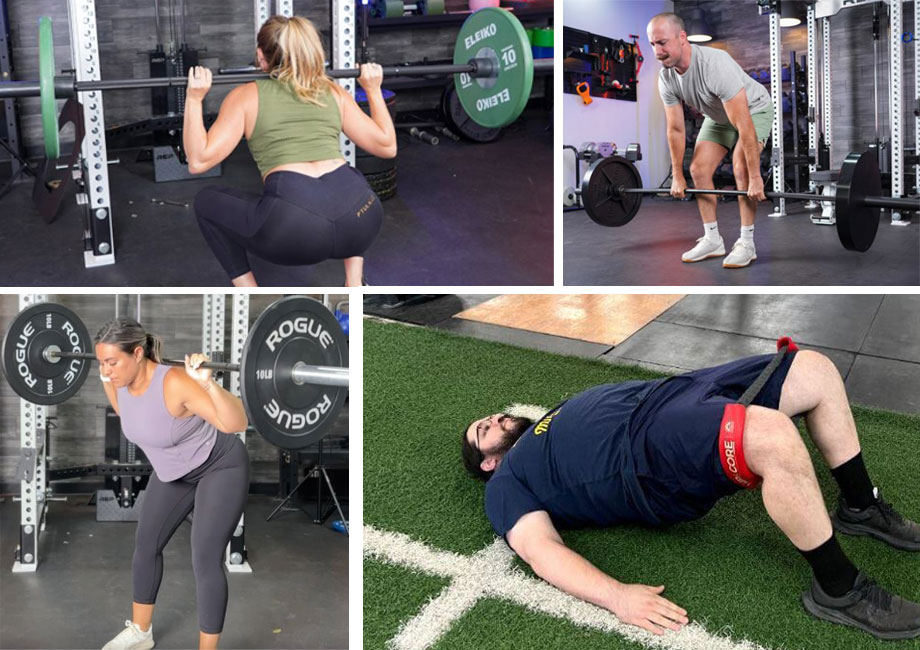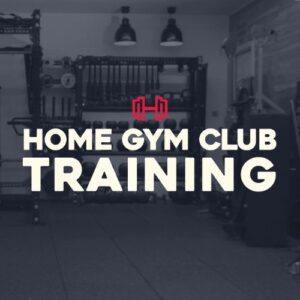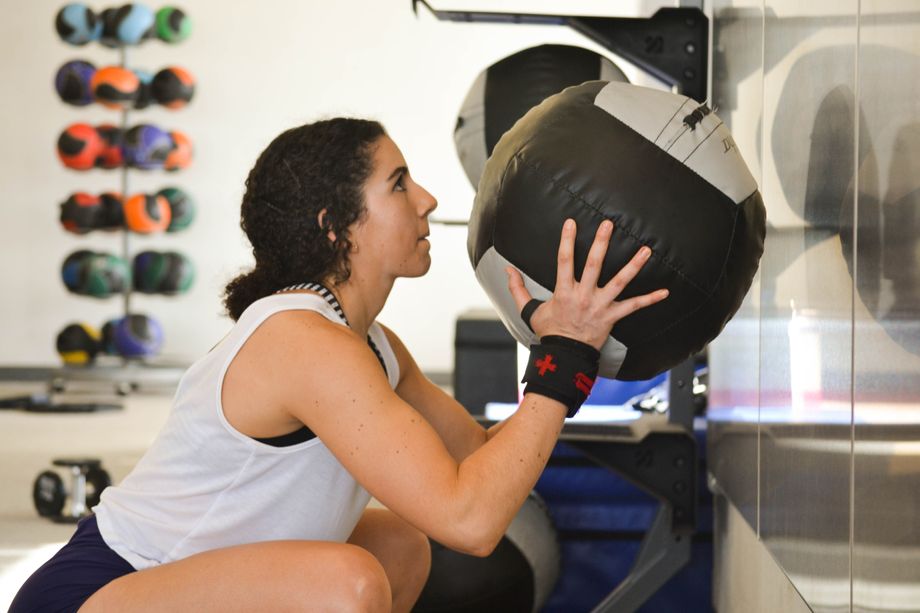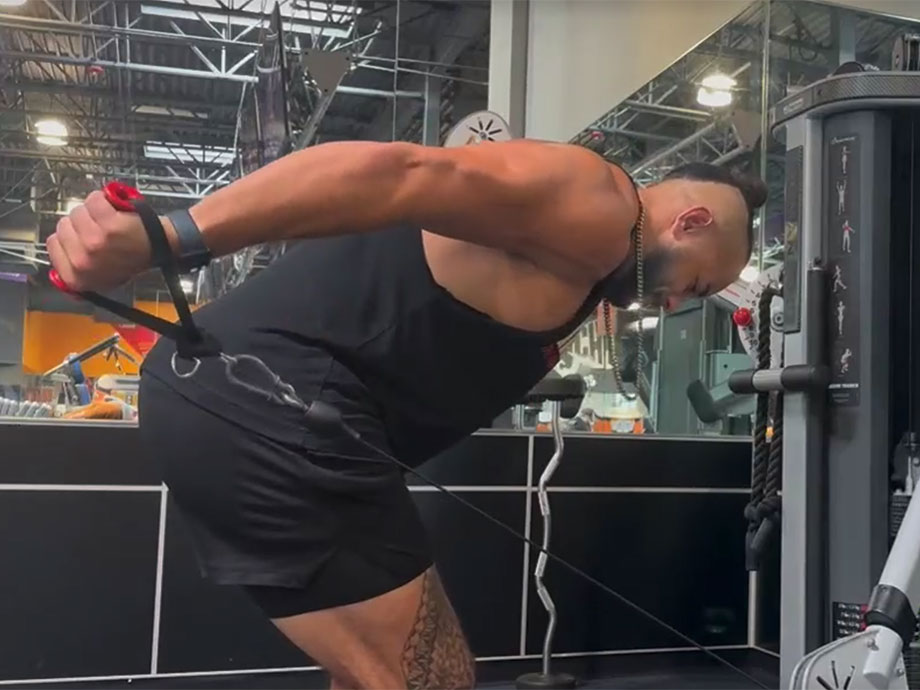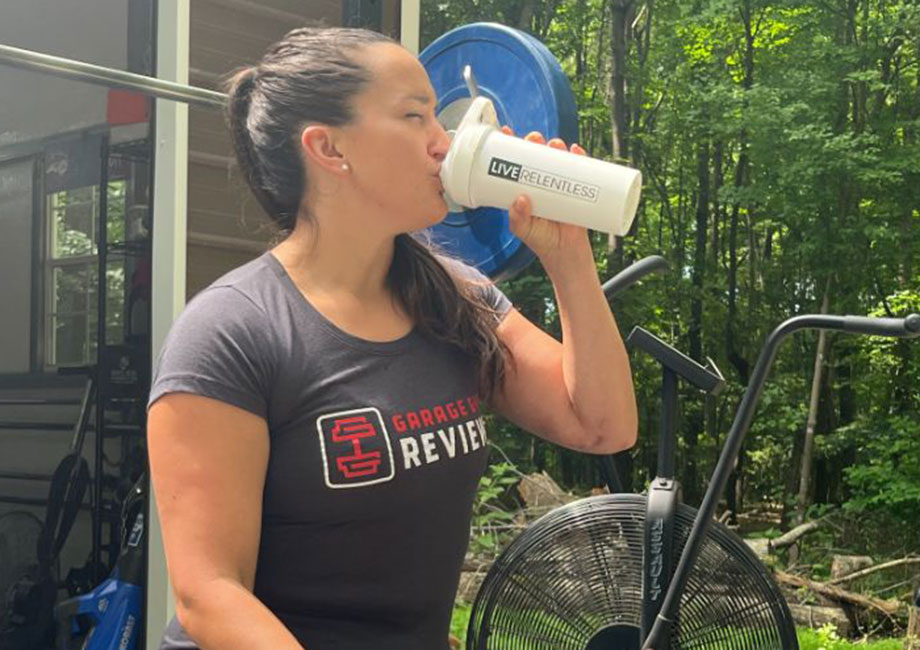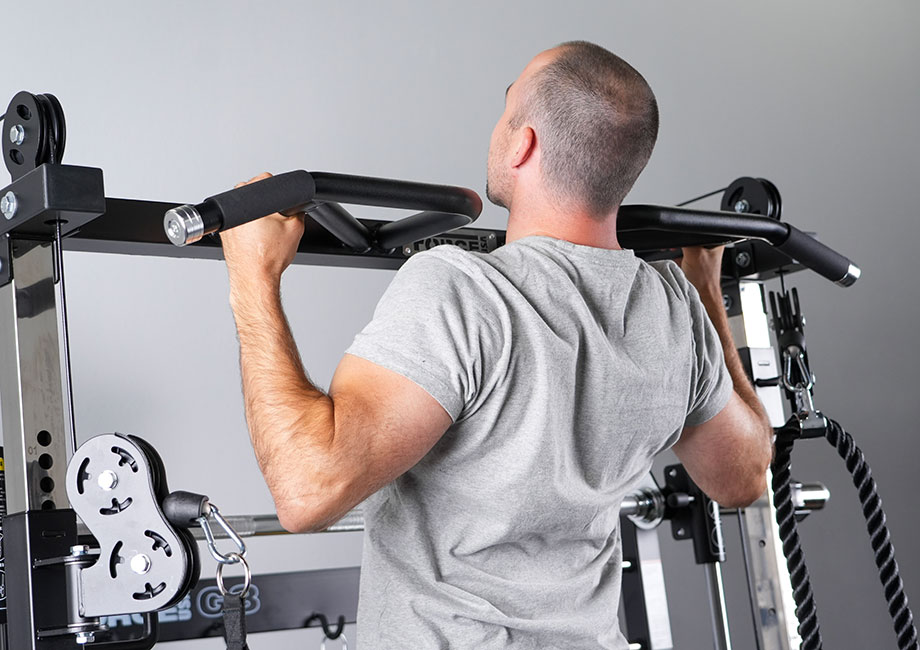Glute workouts are crucial, whether you plan on crushing strength PRs, developing a chiseled physique, or simply looking to enhance performance by running faster or jumping higher. Glutes are among your body’s largest and most powerful muscle groups, offering functional strength for gym-based exercises and everyday movements. Don’t underestimate the importance of incorporating targeted glute exercises into your routine. Fortunately, you’re likely already familiar with some of the most effective ones.
RELATED: Best Glute Machines
As a certified strength and conditioning specialist (CSCS) with a decade of experience, I can’t stress enough the importance of firing up your glutes during a warm-up or training them to develop strength and size for your other lifts.
Here are my top 12 glute exercises and a few of the best glute workouts to help you get started. Your deadlifts and squats will thank you.
12 Best Glute Exercises
- Back Squat
- Romanian Deadlift
- Sumo Deadlift
- Cable Kickback
- Bulgarian Split Squat
- Glute Bridge
- Step-Up
- Hip Thrust
- Good Morning
- Kettlebell Swing
- Goblet Squat
- Curtsy Lunge
Back Squat
Muscles worked: Quadriceps, gluteus maximus, gluteus minimus, gluteus medius, hamstrings, erector spinae, adductors, gastrocnemius and soleus, core muscles
Why do it: The back squat reigns supreme among lower-body strength exercises for its effectiveness and functional qualities. Achieving a deep bottom position stimulates the lengthening and recruitment of glute muscles while engaging your quads and hamstrings for powerful hip and knee extension in unison. If you’ve been away from squats for some time, your glutes will surely remind you the next day.
How to Do it:
- Load your weight, then position your hands on a racked barbell just outside shoulder width.
- Step under the bar, squeeze your traps, and rest the barbell on your upper back.
- Step back from the squat rack, standing firmly with your feet hip-width apart.
- Brace your core, bend your knees, and descend into a squat (aim for 90 degrees).
- Drive through your feet to stand back up.
- Repeat for desired reps then rerack the barbell between sets.
RELATED: Squat Workout
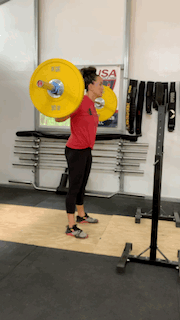
Modifications
- Dial it back: To reduce the intensity, consider implementing box squats, front squats, or goblet squats to work with lighter loads or reduce your range of motion until your squats are up to par.
- Make it harder: There are numerous ways to progress back squats beyond loading up the bar. Try tempos and pauses to increase time under tension and isometric strength. You can also toss resistance bands or chains on the barbell to ramp up dynamic effort.
Expert tip: Perform your squats with a controlled tempo for the best muscle engagement.
Romanian Deadlift
Muscles worked: Hamstrings, gluteus maximus, gluteus maximus, gluteus minimus, gluteus medius, erector spinae, adductors, gastrocnemius and soleus, core muscles
Why do it: The Romanian deadlift is a highly effective exercise for building hamstring strength, size, and muscle integrity, crucial for injury prevention. This hip-dominant movement provides a powerful stretch to the hamstrings as the barbell descends, improving eccentric strength.
How to Do it:
- Position your feet hip-width apart, flat against the floor.
- Grab the barbell with a shoulder-width overhand grip.
- Lift the barbell to standing.
- Hinge by creating a slight bend in your knees and pushing your hips back. Keep the bar close to your lower body as your chest leans forward.
- Lower the bar slowly until you feel a stretch in your hamstrings, keeping your back straight.
- Then, drive your heels into the ground and your hips forward (without hyperextending your back) to return to the starting position.
- Repeat for desired reps.
RELATED: Romanian Deadlift vs. Deadlift
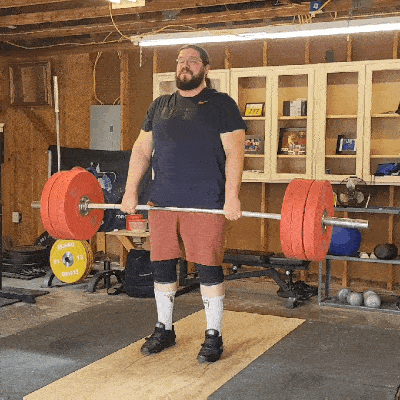
Modifications
- Dial it back: Reduce intensity with lighter loads for dumbbell or kettlebell Romanian deadlifts (RDLs). For added stability and unilateral benefits, try assisted single-leg RDLs. Additionally, incorporate seated or lying hamstring curls to isolate and build muscle mass, or challenge yourself with slider leg curls, emphasizing hamstring control with bodyweight resistance.
- Make it harder: To progress your training, incorporate deficit RDLs to expand the range of motion or utilize slow eccentrics (lowering) to intensify time under tension and enhance muscle control, fostering eccentric strength development. Good mornings effectively target the lower back, hamstrings, and glutes, while stiff-leg deadlifts emphasize hamstring and lower back development with straight legs. Snatch-grip RDLs engage the upper back and shoulders while extending the length of each repetition for added challenge and muscle engagement.
Expert tip: Squeeze your glutes as the barbell passes your knees to drive powerful hip extension for a strong lockout.
Sumo Deadlift
Muscles worked: Quadriceps, gluteus maximus, gluteus minimus, gluteus medius, hamstrings, erector spinae, adductors, gastrocnemius and soleus, core muscles
Why do it: The sumo deadlift stimulates recruitment of your glutes, quads, and hips while moving the barbell through a shortened range of motion (bottom to top), increasing the potential to train with greater loads compared to traditional deadlifts.
How to Do it:
- Load the barbell with your preferred weight.
- Position the barbell on the floor and set your feet wide apart, approximately twice your shoulder width, with your toes pointed slightly outward.
- Grab the bar with either an overhand or mixed grip, with your arms and hands inside your legs.
- Lift your chest up and brace your core.
- Push your heels into the ground to lift the barbell off the floor.
- Lift the bar until you stand upright, squeezing your glutes at the top.
- Slowly return the bar to the floor to reverse the motion.
- Continue for the desired number of reps.
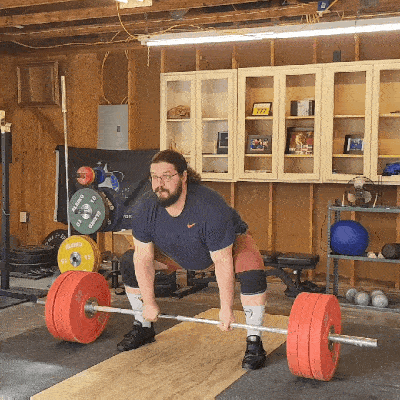
Modifications
- Dial it back: It’s best to introduce the sumo deadlift using regressions such as kettlebell sumo deadlifts or even practicing posterior training via kettlebell or dumbbell deadlifts. If you’re limited in weight or have no equipment, sumo deadlift high pulls can ramp up strength and power, while you can easily train banded sumo deadlifts at home.
- Make it harder: Similar to other barbell deadlift variations, there are various ways to progress the movement creatively. Box sumo deadlifts enhance positional strength, deficit deadlifts increase the range of motion, and incorporating chains or resistance bands introduces dynamic training elements to the traditional variation.
RELATED: Best Resistance Bands
Expert tip: Drive your legs and stand tall for a smooth lockout.
Cable Kickback
Muscles worked: Gluteus maximus, gluteus minimus, gluteus medius, hamstrings
Why do it: Cable kickbacks are an excellent isolation exercise that specifically targets the glute muscles while enhancing strength and stability through unilateral movements. Best suited for hypertrophy goals, kickbacks are most effective when incorporated into higher repetition sets with low to moderate weight, promoting the development of lean muscle mass in the glutes.
How to Do it:
- Stand facing the cable machine with your feet hip-width apart.
- Attach the appropriate attachment on your right leg.
- Hinge forward at your hips, keeping your back straight, and bend your right knee.
- Push your foot back, and extend your working leg straight behind you.
- Squeeze your glutes throughout the movement.
- Lower your leg back to the start position.
- Complete the desired reps on one leg before switching.
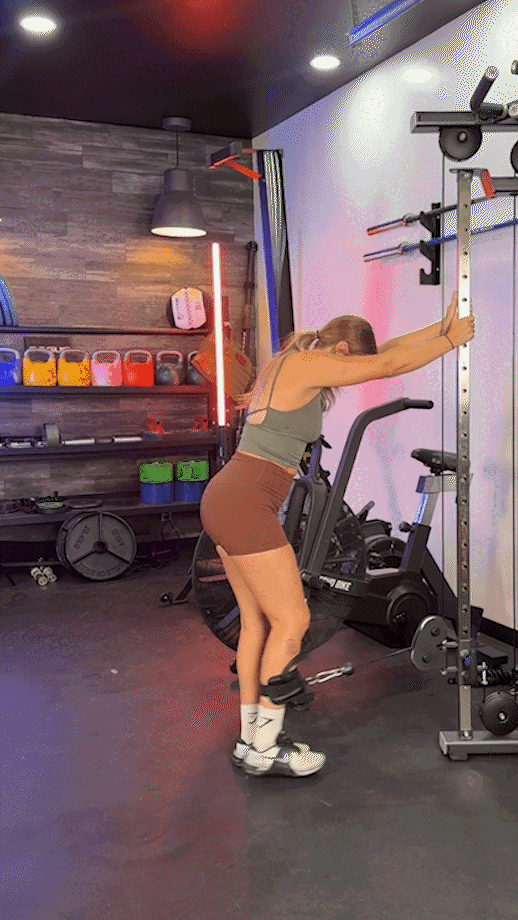
Modifications
- Dial it back: An easy regression for cable kickbacks would be to utilize bodyweight kickbacks or donkey kicks during your leg workouts or to activate your glutes when warming up.
- Make it easier: Two potent exercises that mimic the unilateral nature of kickbacks would be single-leg glute bridges and single-leg hip thrusts. Both exercises will allow you to ramp up the intensity as you work on muscle hypertrophy, strength, and hip stability.
Bulgarian Split Squat
Muscles worked: Quadriceps, gluteus maximus, gluteus minimus, gluteus medius, hamstrings, erector spinae, adductors, gastrocnemius and soleus, core muscles
Why do it: Bulgarian split squats target your quadriceps, hamstrings, and glutes with a unilateral approach. By elevating one leg behind you, this exercise enhances balance, stability, and flexibility while promoting lower-body strength and muscle symmetry. It corrects imbalances between legs and reduces injury risk by strengthening stabilizers.
How to Do it:
- Position your left foot on an elevated surface, with your rear knee under your hip and a barbell resting on your shoulders.
- Place your right foot forward in a lunge position, keeping your front shin vertical.
- Lower your knee toward the ground.
- Drive through your right leg to squat up.
- Repeat desired reps.
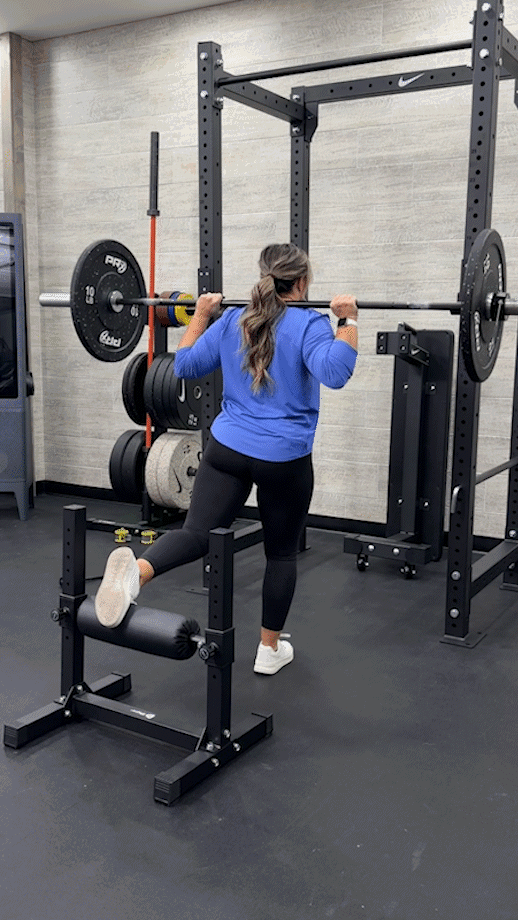
Modifications
- Dial it back: Front lunges, reverse lunges, and split squats are common regressions for Bulgarian split squats. All variations can be modified using a barbell, dumbbells, or kettlebells and varied further using different rack and holding positions (suitcase, front rack, two-handed holds, etc.).
- Make it harder: Adding tempos (slow lowerings) and pauses during Bulgarian split squats increases intensity by emphasizing time under tension and isometric strength without increasing weight. Alternatively, using a barbell can provide a challenging option for those aiming to lift heavier loads. Elevating your front foot by a few inches is another progression to increase the range of motion.
Expert tip: Push your whole foot evenly through the floor to squat up strong.
RELATED: Best Dumbbells
Glute Bridge
Muscles worked: Gluteus Maximus, gluteus minimus, gluteus medius, hamstrings, erector spinae, core muscles
Why do it: The glute bridge is a foundational exercise renowned for strengthening the gluteus maximus and enhancing hip extension. Its benefits extend beyond the basic level, directly contributing to strength gains in compound movements like squats and deadlifts and enhancing performance in dynamic activities such as sprinting and jumping. Despite its simplicity, the glute bridge offers ample room for intensity adjustments, making it suitable for all fitness levels.
How to Do it:
- Lie on your back with your knees bent and feet flat on the floor, hip-width apart.
- Align your shins vertically with ankles and knees stacked.
- Tilt your pelvis toward your ribs and brace your abs.
- Press your feet into the floor and drive your hips up with control.
- Squeeze your glutes at the top, pause briefly, then slowly lower back down.
- Repeat for desired sets and reps.
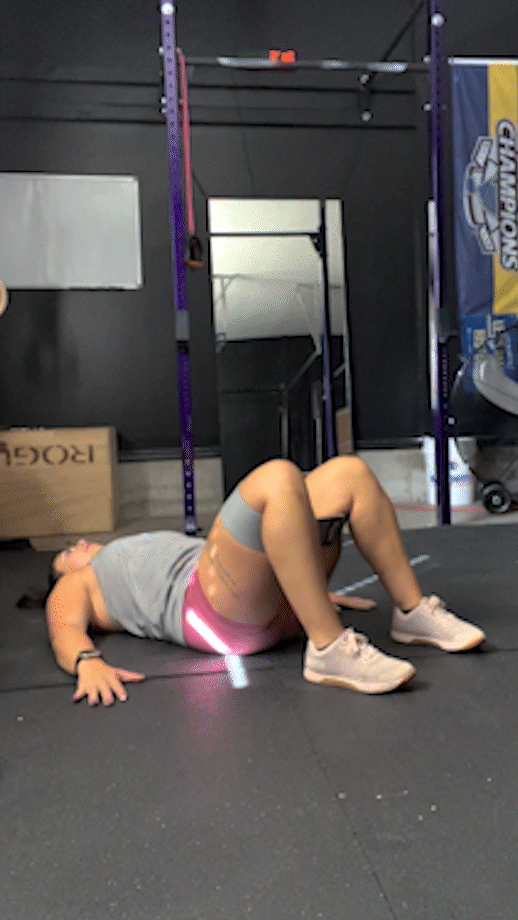
Modifications
- Dial it back: Bodyweight glute bridges are an excellent option for at-home workouts and muscle activation during warm-ups, or you can up the intensity during your workout by using tempos and pauses or mini-bands for extra resistance.
- Make it harder: Progressing glute bridges can be accomplished by weighting with barbells and dumbbells. Single-leg variations also increase the intensity while supporting unilateral strength and stability improvements.
Step-Up
Muscles worked: Quadriceps, gluteus maximus, gluteus minimus, gluteus medius, hamstrings, erector spinae, adductors, gastrocnemius and soleus, core muscles
Why do it: Step-ups elicit one of the highest levels of glute activation1 due to the stability demands of each rep. They’re great for strengthening the muscles involved in hip and knee extension, boosting functional movement patterns, and enhancing lower body strength and power. One key benefit of step-ups is their ability to improve unilateral strength and balance, as each leg works independently. Step-ups are versatile as they can be easily adjusted to accommodate various fitness levels by modifying the height of the platform or adding weight.
How to Do it:
- Position yourself in front of a sturdy platform or bench.
- Stand with your feet hip-width apart.
- Step onto the platform with one foot, ensuring it’s centered and balanced.
- Push through your whole foot on the platform to drive your body up.
- Straighten your leg and bring the opposite foot onto the platform.
- Lower yourself back down by stepping off the platform.
- Repeat the motion, alternating legs for each step-up.
- Complete the desired number of repetitions on each leg.
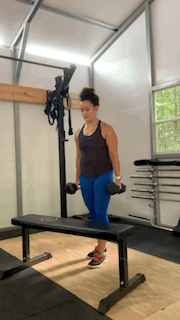
Modifications
- Dial it back: Step-ups can easily be dialed back by reducing the height of the box or surface.
- Make it harder: Increasing the box height, introducing weight, and experimenting with varying equipment, holds, and rack positions are great options for progressing the standard box step-up.
RELATED: Best Weight Bench
Hip Thrust
Muscles worked: Gluteus Maximus, gluteus minimus, gluteus medius, hamstrings, erector spinae, core muscles
Why do it: Hip thrusts isolate and strengthen the glutes, and the elevated position enables hip thrusts to move through a greater range of motion than glute bridges, promoting muscle growth, strength, and power in the posterior chain. Hip thrusts improve hip extension, enhancing athletic performance in activities like sprinting and jumping while correcting imbalances and reducing lower back pain. Barbell hip thrusts are my go-to hip bridge variation for athletes and clients once they’ve progressed beyond glute bridges.
How to Do it:
- Sit on the ground with your upper back against a bench or sturdy surface.
- Bend your knees and keep your feet flat on the floor, hip-width apart.
- Drive through your heels, pushing your hips upward until your body forms a straight line from your shoulders to your knees.
- Squeeze your glutes at the top of the movement, then lower your hips to the starting position.
- Repeat for the desired sets and reps.
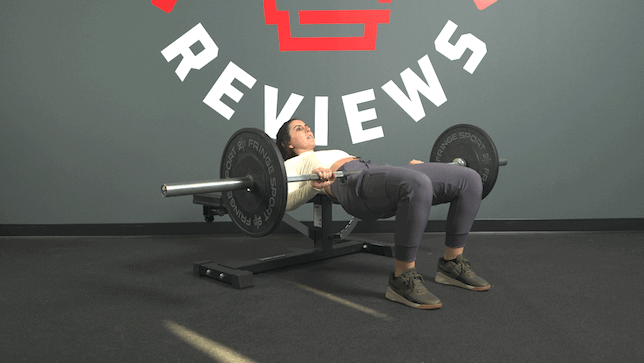
Modifications
- Dial it back: Simple regressions for hip thrusts would be performing them as a bodyweight exercise or simply bringing the body back down to the floor to perform glute bridges.
- Make it harder: Progressing hip thrusts is as easy as loading your hip crease with a barbell, dumbbell, or even bands or chains. To kick things up another notch, gradually introduce tempos and pauses.
RELATED: Hip Thrust Workout
Good Morning
Muscles worked: Erector Spinae, hamstrings, gluteus maximus, gluteus minimus, gluteus medius, adductors
Why do it: The good morning is potent for engaging your entire posterior chain, including your lower back, glutes, and hamstrings. It also serves as one of the best ab exercises for building core strength, enhancing posture, and improving mobility.
How to Do it:
- Position your feet shoulder-width apart, your knees slightly bent, and a barbell resting against your shoulders.
- Push your hips back and lower your chest toward the floor, squeezing your core tight.
- Continue lowering your chest until it’s almost parallel to the floor.
- Drive your hips forward as you stand, slowly returning to the start position.
- Repeat for desired sets and reps.
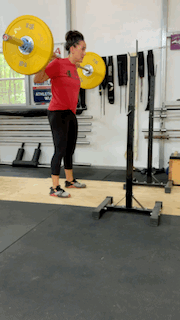
Modifications
- Dial it back: Utilize regressions such as bodyweight good mornings, or use med balls, bands, or kettlebells to groove movement patterns. You can also plug good mornings into your prep work to ignite your posterior chain.
- Make it harder: Load up the weight—with perfect technique, of course—by using a barbell, cambered bar, or a safety squat bar, which is my personal favorite.
Kettlebell Swing
Muscles worked: Gluteus maximus, hamstrings, quadriceps, erector spinae, deltoids, trapezius, latissimus dorsi, core muscles
Why do it: Kettlebell swings introduce a dynamic option for developing your glutes, hamstrings, and lower back while promoting powerful hip extension. Although this exercise focuses on your backside, it delivers a full-body workout that engages your shoulders, back, and core.
How to Do it:
- Place your feet shoulder-width apart and hold the kettlebell with an overhand grip.
- Start in a standing position with the kettlebell right below your hips.
- Brace your core and unlock your knees slightly.
- Hinge your hips back and allow your torso to come forward.
- Drive your hips forward, swinging the kettlebell with straight arms to chest height (Russian version). For an American kettlebell swing, the end of the movement is when the kettlebell is fully overhead.
- As the kettlebell swings back, hinge your hips and allow the kettlebell to pass gently between your legs.
- Cycle back into the swing motion driving the kettlebell back up.
- Repeat for desired reps.
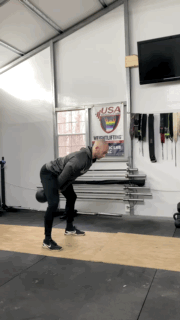
Modifications
- Dial it back: Utilize kettlebell RDLs and deadlifts to improve your hip extension using your posterior chain before attempting the full swing.
- Make it harder: Boosting your kettlebell swings is as simple as using double kettlebells for swings or ski swings or mixing your technique up between Russian and American variations. Single-arm options are great, too.
Expert tip: Pull the kettlebell back between your legs using your lats on the descent.
RELATED: Best Kettlebells
Goblet Squat
Muscles worked: Quadriceps, gluteus maximus, gluteus minimus, gluteus medius, hamstrings, erector spinae, adductors, gastrocnemius and soleus, core muscles
Why do it: The goblet squat suits all fitness levels while developing the glutes, quads, hamstrings, and core. The goblet hold position requires your core and glutes to stabilize your body and fight excessive torso flexion (forward bending). There are also several variations to modify the goblet squat, including heel-elevated, tempos, pauses, one-and-a-half reps, etc.
How to Do it:
- Hold a dumbbell or kettlebell with both hands close to your chest.
- Stand with your feet shoulder-width apart, toes slightly turned out.
- Brace your core and lift your chest up.
- Lower your body by bending your knees and pushing your hips back.
- Lower until your thighs are parallel to the ground (about a 90-degree angle) or as far as comfortable.
- Keep your feet flat on the ground throughout the movement.
- Push through your feet to return to the starting position.
- Repeat for the desired number of repetitions.
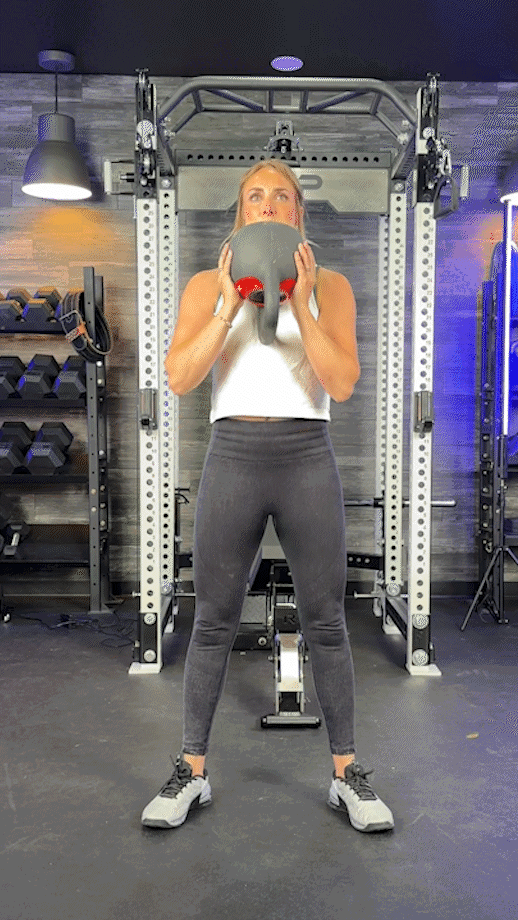
Modifications
- Dial it back: If you’re new to squatting, doing a goblet box squat is an excellent way to improve squat strength and stability while you improve the necessary mobility or bust out a few sets of bodyweight squats.
- Make it harder: For strength gains, advance to dumbbell or kettlebell front squats or barbell back or front squats. To enhance power, incorporate jump squats, with or without additional weight, as a highly effective progression and training with a twist on the stimulus. To increase hypertrophy, elevate your heels by an inch or two.
Expert tip: Keep your chest tall and your abs tight to maintain a vertical torso during your goblet squats.
Curtsy Lunge
Muscles worked: Quadriceps, gluteus maximus, gluteus minimus, gluteus medius, hamstrings, erector spinae, adductors, gastrocnemius and soleus, core muscles
Why do it: Curtsy lunges are renowned for activating the glutes to stabilize your hips, but they also excel in training non-traditional movement patterns by adding a rotational “twist” to lateral lunges. You’ll feel the effect from your core down through your legs.
How to Do it:
- Stand with your feet hip-width apart.
- Take a step back and diagonally behind your body with one foot, crossing it behind your other leg.
- Start to bend both knees to lower your body toward the ground. Keep your front knee aligned with your ankle and your back knee pointing toward the ground.
- Lower until your back knee nearly touches the ground or as far as comfortable.
- Push through your front foot to return to the starting position.
- Repeat on the other side, stepping back and crossing behind with the opposite foot.
- Complete the desired number of repetitions on each side.
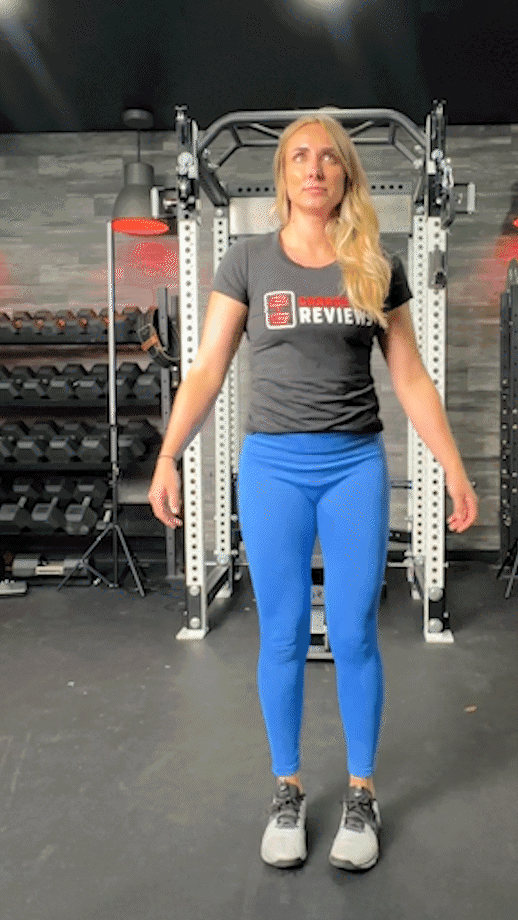
Modifications
- Dial it back: The optimal regression for curtsy lunges is lateral lunges or prioritizing technique mastery before progressing to weighted exercises. Begin with bodyweight variations or use assisted variations since the movement pattern may initially feel unfamiliar.
- Make it harder: Adding weight in the form of goblet holds, double kettlebells, or dumbbells allows for a gradual increase in intensity. Working from a deficit is another excellent option to increase the range of motion and time under tension.
Expert tip: Feel your back foot make contact with the floor before descending into the lunge. Stability is key!
Sample Glute Workouts
You made it! Allow me to dish out a few sample workouts to elevate your glute training designed to sculpt and strengthen your backside. Whether you aim to build raw strength, increase muscle size, or are just starting, I’ve got you covered with intermediate to advanced-level routines and a beginner-friendly option to kickstart your glute gains.
RELATED: Lower-Body Workouts
Glute Workout for Strength
Strength-focused workouts incorporate compound exercises that recruit larger muscle groups to increase PRs. This workout emphasizes sets with fewer reps and transitions from bilateral to unilateral movements. It’s about more than just lifting heavy weights; integrating unilateral exercises alongside bilateral movements enhances single-leg strength and addresses lower body imbalances.
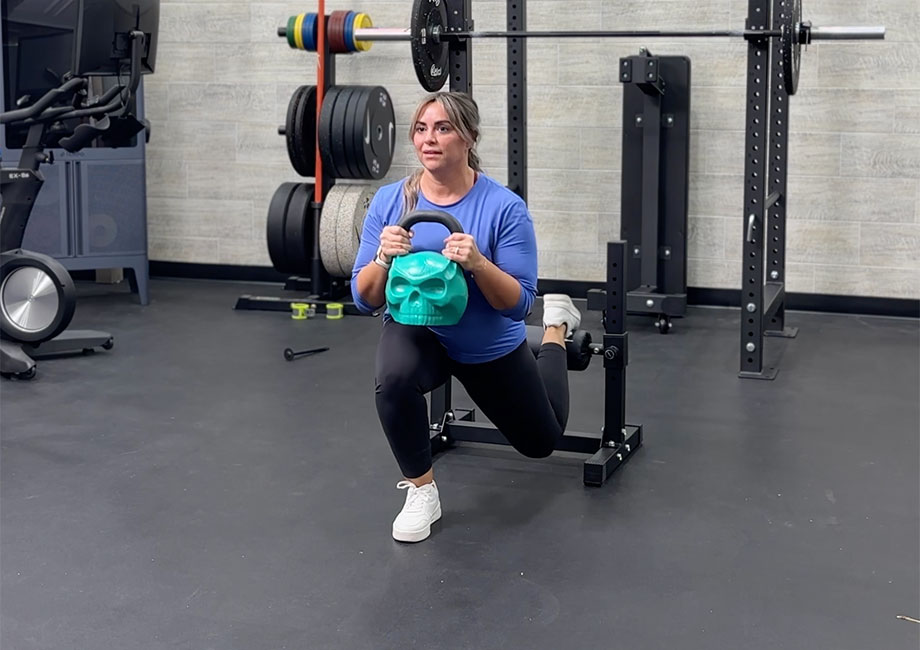
You’ll want to knock out a few warm-up sets, building them to your workout sets to prime your body and movement. Make sure to use longer rest periods—two minutes should work perfectly.
Warm-up: Perform two to three rounds
- Reverse lunge + rotation x 8 reps, per side
- Alternating lateral lunge x 8 reps, per side
- Air squat x 8
- Glute bridge x 20 sec. hold
| Exercise | Sets | Reps |
| Back Squat | 4 | 5-8 |
| Romanian Deadlift | 3 | 5-8 |
| Hip Thrust | 3 | 8-12 |
| Bulgarian Split Squat | 3 | 8-12, per side |
Equipment needed: Squat rack, barbell, weight plates, dumbbells, weight bench or a plyo box
RELATED: Best Squat Racks
Glute Workout for Muscle Size
I designed this glute-focused workout to develop lean muscle mass through sets with higher rep schemes that target muscle hypertrophy. This routine offers a balanced blend of movements to stimulate size development, beginning with bilateral and unilateral compound exercises.
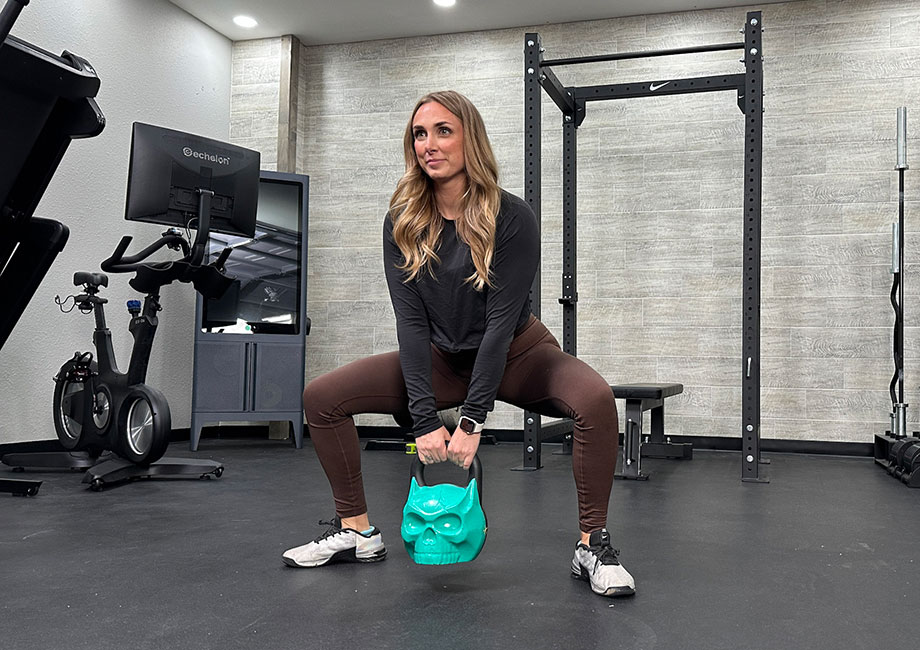
Workouts crafted for muscle size can induce significant muscle fatigue, so starting with moderate weights is advisable. Aim to complete all sets at the higher end of the rep ranges before increasing weight.
Warm-up: Perform two to three rounds
- Air squat x 10 reps
- Squat to hamstring stretch x 10 reps
- Single-leg glute bridge x 20 sec. hold, per side
- Banded clam shell x 10 reps, per side
- Bird-dog x 20 sec. hold, per side
| Exercise | Sets | Reps |
| Sumo Deadlift | 4 | 8-12 |
| Bulgarian Split Squat | 4 | 8-12, per side |
| Single-Leg RDL | 3 | 12-15, per side |
| Cable Kickback | 3 | 12-15, per side |
Equipment needed: Barbell, weight plates, dumbbells, cable machine
Glute Workout for Beginners
For a beginner-level workout to shine, the movements must be simple and progressive, allowing movement mastery and building a foundation of technique and strength. Luckily for you, this is what this beginner glute workout is about! Forego complexity and focus on simplicity, allowing you to lay a solid foundation.
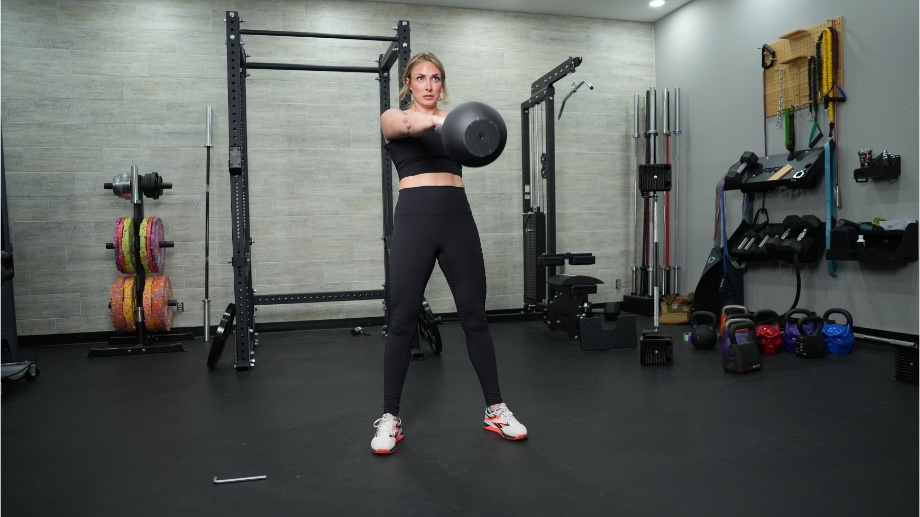
Keep the weights light, even body weight, if necessary, and focus on great movement, paving the way for more advanced workouts.
Warm-up circuit: Perform two to three rounds.
- Air squat x 10 reps
- Alternating reverse lunge x 10 reps, per side
- Glute bridge x 10 reps
- Bird-dog x 20 sec. hold, per side
| Exercise | Sets | Reps |
| Goblet Squat | 3 | 6-10 |
| Glute Bridge | 3 | 6-10 |
| Box Step-up | 3 | 8-12, per side |
| Kettlebell Swing | 3 | 8-12 |
Equipment needed: Dumbbells or kettlebells, weight bench or a plyo box.
What Muscles Make Up the Glutes
The gluteal muscles include the powerful gluteus maximus—one of the largest muscles in the human body—and the stabilizing gluteus medius and minimus, which are vital for both form and function in movement. Glute anatomy plays a key role in powering through lifts and providing stability during everyday activities. By targeting these muscles with specific exercises, you can enhance performance, prevent injury, and sculpt a strong, balanced lower body.
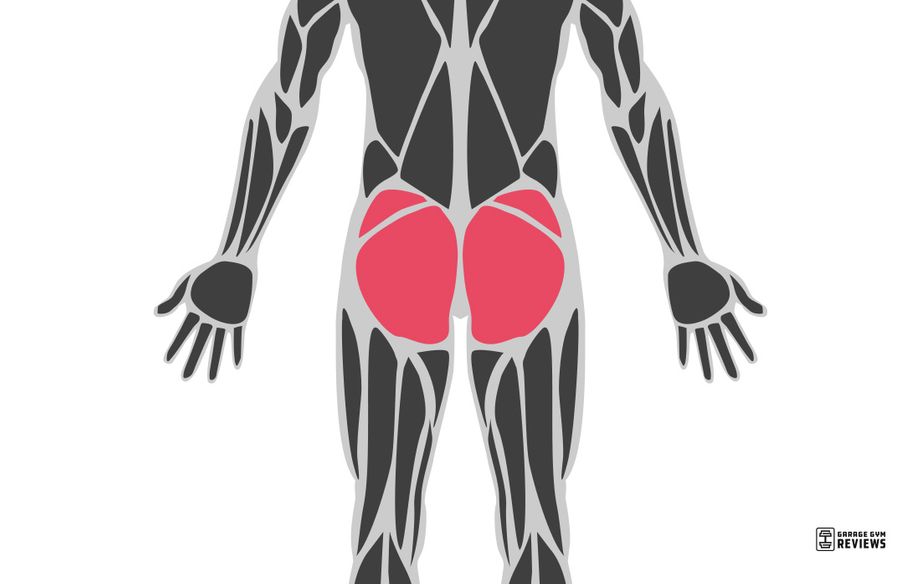
- Gluteus Maximus2: Primarily responsible for hip extension, thigh abduction (moving the thigh away from the midline of the body), and external rotation of the hip joint.
- Gluteus Minimus3: Primarily functions in hip abduction, thigh internal rotation (rotating the thigh inward toward the midline of the body), stabilizing the pelvis, and assisting the gluteus maximus in hip extension.
- Gluteus Medius4: This glute medius acts similarly to the gluteus minimus, with primary functions in hip abduction, thigh internal rotation (rotating the thigh inward toward the midline of the body), stabilizing the pelvis, and assisting the gluteus maximus in hip extension.
Benefits of Training Glutes
Engaging your glutes—often called the body’s powerhouse— goes beyond aesthetics. Training your glutes is potent for amplifying lower body strength and power, elevating athletic performance, safeguarding against injuries, and ensuring you stay resilient and consistent in the gym.
Improves Lower-Body Strength and Power
Strong glutes amplify your lower-body strength lifts by driving powerful hip extension1. In a March 2018 study in the Journal of Strength and Conditioning Research5, researchers found that the gluteal muscles serve as a primary mover at the hip during various weight-bearing exercises, generating force out of the bottom position in squats and locking out positions in deadlifts, resulting in efficient and powerful movements.
In my decade of coaching and strength training, I’ve found that athletes and clients possessing greater levels of glute strength (via barbell glute bridges and isometric strength) tend to perform better on compound strength lifts.
Drives Athletic Performance
Training your glutes boosts athletic performance by enhancing power generation, speed, and agility and contributes to success in dynamic sports and movements like jumping and sprinting.
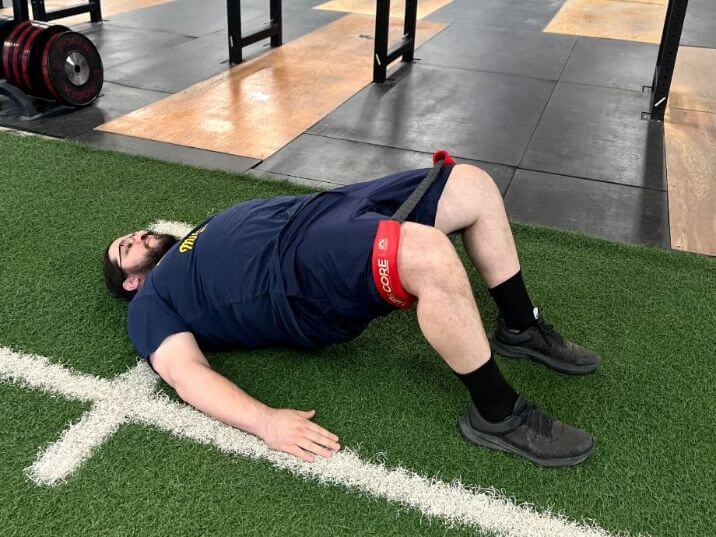
Supported by research published in the August 2020 issue of the International Journal of Environmental Research and Public Health6, a focused gluteal muscle exercise program was found to significantly increase measurements of jump height, flight time, power, and speed after just an eight-week intervention.
Helps Prevent Injury
Weak glutes7 can lead to imbalances and compensations in other muscles, increasing the risk of injury, such as hamstring strains, knee pain, and lower back issues, leading to athletic underperformance. By strengthening your glutes, you can correct these imbalances, improve biomechanics and strength, and reduce the likelihood of injuries, allowing you to stay in the gym and perform at your best.
Best Glute Workouts: Final Thoughts
If you don’t prioritize glute strength in your workouts, you’re missing out on training one of the human body’s largest and most powerful muscle groups. Don’t worry; it’s not too late to get started.
Here’s a quick rundown:
- The gluteal muscles are composed of three main muscles—gluteus maximus, gluteus minimus, and gluteus medius.
- Glute workouts improve strength and size, enhance athletic performance, and reduce the likelihood of injury.
- The best glute exercises go beyond bridges and kickbacks. Squats, deadlifts, step-ups, bulgarian split squats, and many others can recruit the glute muscles exceptionally well.
Best Glute Workouts: FAQs
What is the most effective glute workout?
The most effective glute workout will combine compound strength exercises like back squats, RDLs, good mornings, or hip thrusts combined with unilateral strength exercises such as step-ups, curtsy lunges, or Bulgarian split squats to improve stability and finish with more focused lifts such as glute bridges to directly target the glute muscles.
Here’s a quick example workout:
– Back squat: 3 sets of 5-8 reps
– Box step-up: 3 sets 8-12 reps, per side
– Glute bridge: 3 sets of 8-12 reps
How do you hit all 3 glute muscles?
Include diverse exercises in your workouts to hit all three of your glute muscles: the gluteus maximus, gluteus medius, and gluteus minimus (aka butt muscles). Incorporate a variety of movements into your workout routine, focusing on engaging each muscle group with proper form and training with various movement patterns.
Focus on gradually increasing intensity or resistance as you progress to keep up the challenge. Change your workouts regularly to avoid plateaus and ensure balanced muscle development for optimal results.
RELATED: Glute Exercises At Home
Are glutes the hardest muscle to grow?
Too many factors are involved in working out to label a particular muscle group the “hardest muscle to grow.” Exercise selection, progressive overload, nutrition, recovery, and overall training consistency play the most significant roles in muscle growth.
Targeted training strategies that include the best butt exercises, including compound exercises, isolation movements, and variations in intensity, can help you develop and strengthen your gluteal muscles over time.
Be consistent and patient, train hard, and don’t overlook the benefits of working with a certified personal trainer!
RELATED: Best Online Personal Trainer
References
- Neto, Walter Krause et al. “Gluteus Maximus Activation during Common Strength and Hypertrophy Exercises: A Systematic Review.” Journal of sports science & medicine vol. 19,1 195-203. 24 Feb. 2020
- Kenhub. Gluteus Maximus. Accessed March 29, 2024. Available from: https://www.kenhub.com/en/library/anatomy/gluteus-maximus-muscle
- Kenhub. Gluteus Minimus. Accessed March 29, 2024. Available from: https://www.kenhub.com/en/library/anatomy/gluteus-minimus-muscle
- Kenhub. Gluteus Medius. Accessed March 29, 2024. Available from: https://www.kenhub.com/en/library/anatomy/gluteus-medius-and-minimus-muscles
- McCurdy, Kevin, et al. “Gluteus Maximus and Hamstring Activation During Selected Weight-Bearing Resistance Exercises.” Journal of Strength and Conditioning Research, vol. 32, no. 3, 2018, pp. 594-601. DOI: 10.1519/JSC.0000000000001893.
- Gallego-Izquierdo, Tomás et al. “Effects of a Gluteal Muscles Specific Exercise Program on the Vertical Jump.” International journal of environmental research and public health vol. 17,15 5383. 27 Jul. 2020, doi:10.3390/ijerph17155383
- Buckthorpe, Matthew et al. “ASSESSING AND TREATING GLUTEUS MAXIMUS WEAKNESS – A CLINICAL COMMENTARY.” International journal of sports physical therapy vol. 14,4 (2019): 655-669.


